Fishing the Flyways
When world-class waterfowl hunting and fishing destinations collide, the opportunities for adventure are endless
When world-class waterfowl hunting and fishing destinations collide, the opportunities for adventure are endless
Illustrations by Jeff Preg, DU
The North Dakota wind had kicked up, gusting across Devils Lake and causing the water to lap against the hull of our boat as we bobbed up and down. Several hundred Canada geese and ducks must have taken the late-October breeze as a nudge to feed, and they jumped from a nearby marsh and winged toward the big water, veering in our direction.
I lost sight of the ducks as they dumped into the cattails along the lake’s edge, but I continued to watch the geese, daydreaming about cold mornings in a layout blind and ear-splitting goose calls cutting through the prairie wind.
After a few moments of reverie, I remembered the reason we were here today, and I felt the adrenaline rush that I’ve known since childhood as my rod tip bounced and I set the hook. I could still hear the geese sounding their unmistakable fall ballad as my friend Larry Durand reached for the net to scoop up a nice 17-inch walleye. The geese would have to wait until the next morning, when we had a hunt scheduled for the second phase of our cast-and-blast adventure.
It’s not unusual to find quality waterfowl hunting and quality fishing in the same location. In fact, some of the most storied hunting destinations in North America are also rich in angling opportunities. That makes sense, because fish and waterfowl thrive in areas with clean water and abundant wetlands. If you’re a duck hunter with a fishing addiction, or vice versa, check out the following five destinations. If you time it right, you might be able to enjoy both experiences during the same trip.

The Chesapeake Bay could be considered the birthplace of American waterfowl hunting. It’s no secret that many duck and goose hunters have the bay circled in red ink as a bucket list destination, but there’s more than ducks and geese to be found in this historic outdoor paradise.
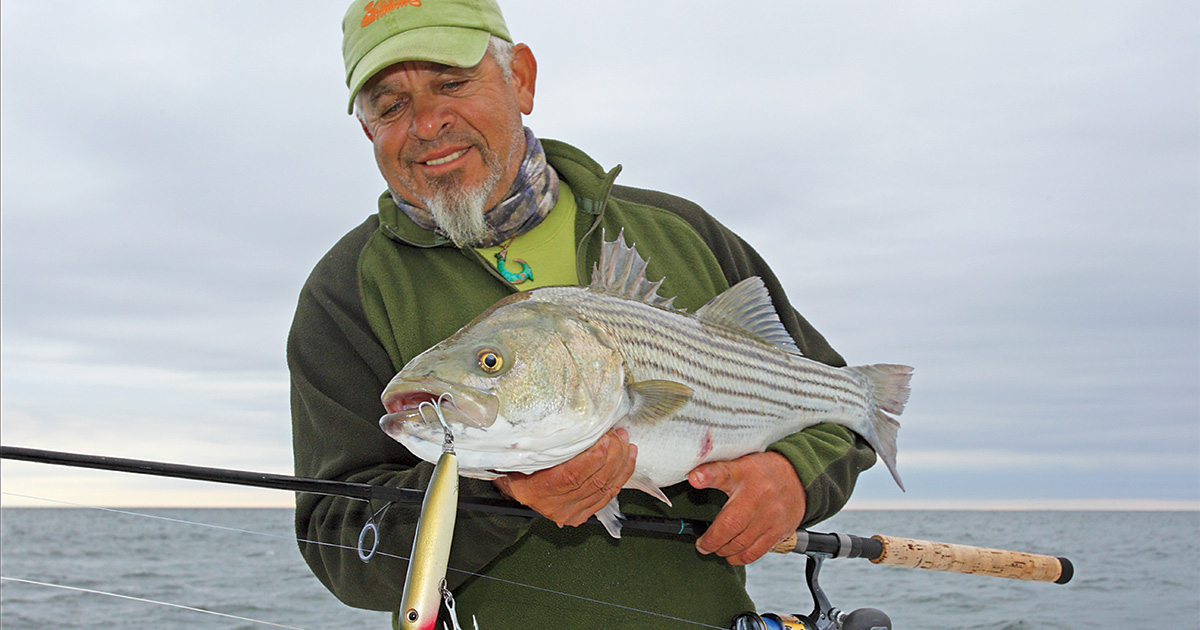
The prime time for striped bass, also known as rockfish, is in the fall, setting the stage for a Chesapeake Bay cast-and-blast adventure.
Keith Heinlein, senior product manager for Stoeger Firearms, grew up on Kent Island, which is smack dab in the middle of the bay. Currently, he lives in Ridgely, Maryland, on the Eastern Shore. While there are more than 380 species of fish in the bay, Heinlein and many other anglers tend to focus on striped bass, which are known regionally as rockfish.
“The fishing here is almost year-round for rockfish,” he says. “But the best time of year is the fall, typically the same time as our duck season. We used to refer to it as ‘Rocktober,’ but now it has moved into November, so there is overlap with duck and goose seasons.”
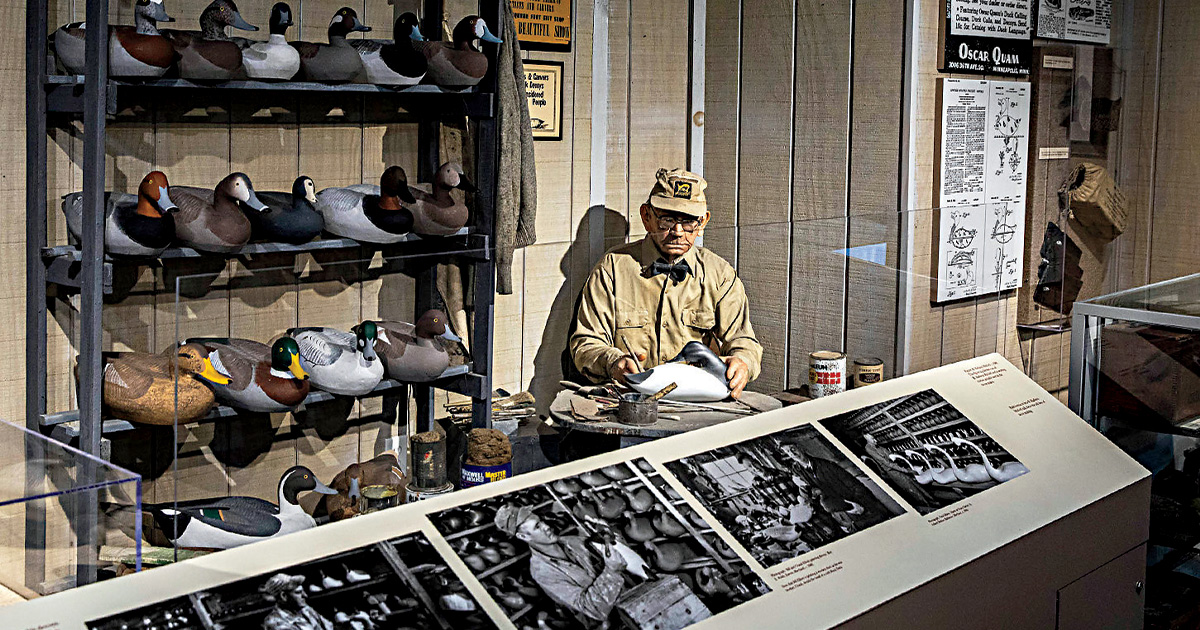
In addition to legendary fishing and waterfowl hunting, the Chesapeake region is home to many interesting cultural and historical attractions, such as the Havre de Grace Decoy Museum.
“I like to troll, but some guys will live-line for them,” Heinlein says. “In the fall, we are looking for big bait balls where the fish are feeding.” Large flocks of birds diving into the water is a dead giveaway for locating baitfish and, in turn, rockfish. “Recently, I found five solid acres of birds just diving in,” he continues. “When it’s like that, the fishing can be incredible.”
Heinlein recommends that hunters traveling to the region ask about outfitters who offer cast-and-blast trips. For those coming to the Eastern Shore with their own duck boats, he advises caution. “The fall can bring in some good winds and the bay can get rough in a hurry. If you have a small duck boat, you’ll want to stick with the tributaries and avoid the big, open water.”
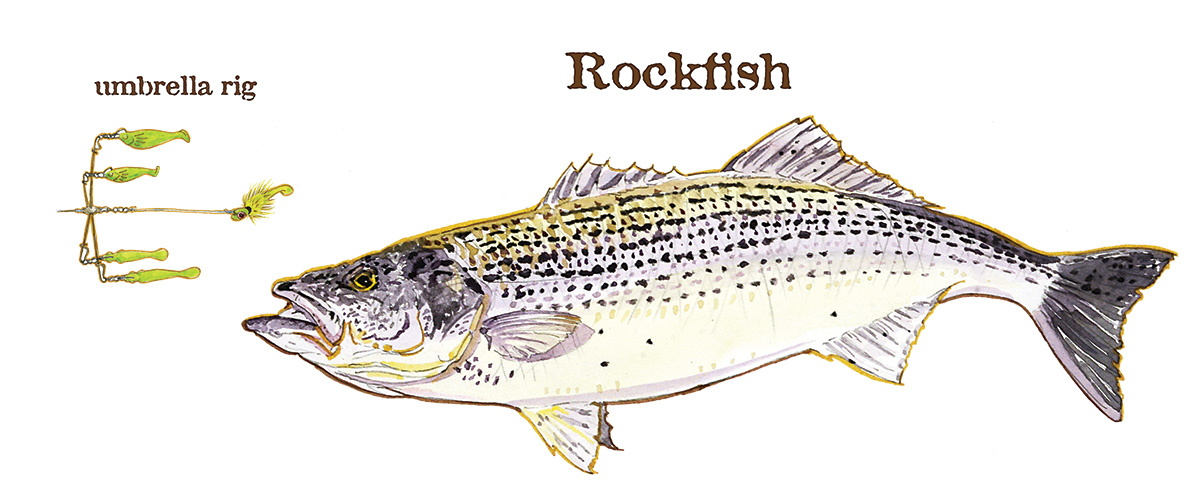
THE BITE: Heinlein uses an assortment of umbrella rigs, tandem swim shads, and bucktail jigs, depending on water temperature and time of year.

Steeped in waterfowling tradition, the Columbia River originates in the Canadian Rockies and winds through some of the most picturesque landscapes in the United States. As it flows toward the Pacific Ocean, it plays host to massive numbers of ducks and geese as well as world-class waterfowl hunting, but it’s the salmon fishing that draws the attention of anglers throughout most of the year.
It’s here that you’ll find Dr. Mark Petrie, director of science and conservation planning for Ducks Unlimited, who regularly pursues Chinook (or king) salmon in the Columbia River near his hometown of Camas, Washington. “There are several runs of salmon in the Columbia, which makes it nearly a year-round opportunity,” says Petrie, who has been fishing the Columbia for more than 20 years. “There’s a spring run from March through May, which produces the highest-quality eating fish, though they can be the toughest to catch. The summer run happens in June and July, and then the fall run, which is usually the largest, produces the best fishing, and will carry you almost into waterfowl season.”
The Columbia River supports healthy runs of both Chinook and coho salmon. Some of the largest runs occur in the fall, giving waterfowlers the opportunity to add a day or two of salmon fishing to their itinerary while visiting the area.
The Columbia is subject to strong currents and big tidal fluctuations. It can also be very susceptible to wind. As you get closer to Astoria, Oregon, the tides and wind can kick up swells of three to five feet. This is not an area for an unknowing, novice boater.
“We used to do a lot of anchor fishing, but over the last five to seven years, the techniques have changed,” Petrie says. “Now, we are trolling 360 flashers with a spinner behind them, and it is very effective. If people are trying to waterfowl hunt and fish, I’d recommend getting a guide. It’s pretty gear intensive, and having the local knowledge would help.
“Our average fish in the fall is around 14 to 15 pounds, with 20 pounds being a good fish,” he continues. “We are focusing on finding the fish at different depths using good electronics and line counters. While the fall run produces bigger fish, I prefer the spring run due to the amount of fat on those fish. We are fishing on a gorgeous river with great scenery. It’s a big river, success is high, and these are wonderful eating fish.”
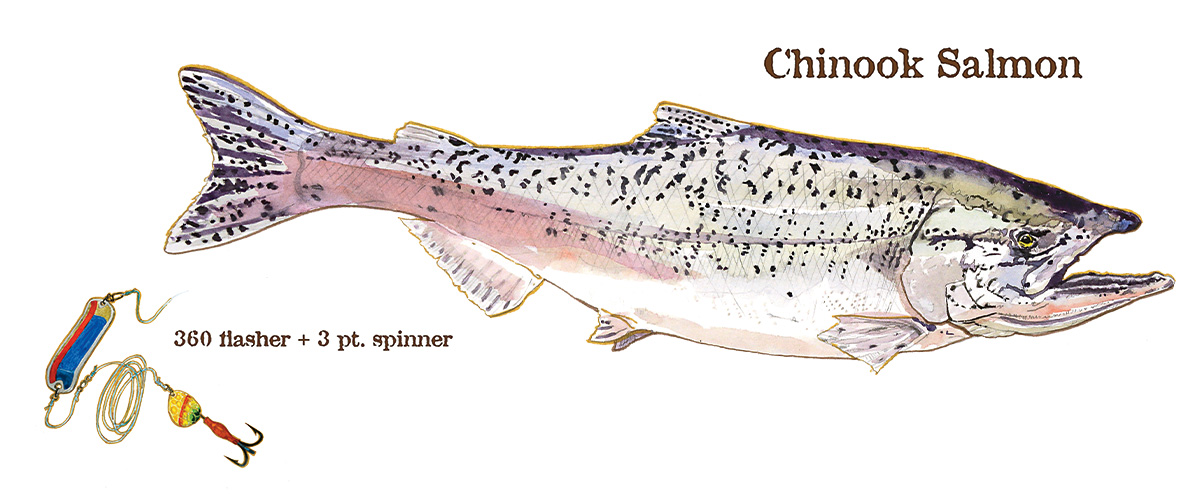
THE BITE: Petrie trolls 360 flashers and three-point spinners, and he changes colors often.

This must-visit fishery is no secret in the angling community. The most difficult aspect of fishing Lake St. Clair is choosing a species to target. Greg Soulliere grew up in Detroit and enjoyed a family cottage on the lake, where he honed his skills for catching walleyes, smallmouths, northern pike, and muskies. Soulliere is uniquely attached to this lake, because he spent most of his career improving the area’s ecosystem in his position as the US Fish and Wildlife Service Joint Venture science coordinator. His work focused on water quality, invasive species control, improving wetland systems, and other conservation efforts on the lake and surrounding waters.
“One of the neat things about Lake St. Clair is that it has both lake features and river features [the east side of the lake is a river delta], which provides a massive flow of fresh, clean water feeding all the small areas,” Soulliere explains. “The three major channels, which are critical for walleyes and sturgeon, are where you’ll find the best walleye fishing most of the year, and just off the channel you can find smallmouths and largemouths.”
For smallmouths, Soulliere drifts 3- to 4-inch minnows through the channels using a pencil sinker and three-foot leader. He also notes that a wide variety of jerkbaits and other plastics work very well on smallmouths. Walleyes bite on 3/4-ounce jigs with a live minnow.
Soulliere prefers the spring fishing because he’s ready to get out of the house, but he explains that the fishing keeps getting better as the calendar turns. He prefers jigging in the spring in the south and middle channels with 3/4-ounce jigs in 30 to 50 feet of water. As the season progresses into summer, he switches to bottom bouncers and night crawlers in the shipping channel. When fall hits, he goes back to jigging. “The fishing in the fall can get so good,” he says, “that I have to stop myself and just say ‘enough.’ That’s about the time I start focusing more on ducks.”
Lake St. Clair is also home to fantastic waterfowling, and much of it is on public land. Harsens Island near Detroit typically makes the list of top public duck hunting spots, and the diving duck hunting on the big water is spectacular. “It’s all state owned, as long as you stay on the water, so the opportunities are there,” Soulliere says. “I’d recommend a good size boat, though. This is a busy shipping area, and the wind can make the lake very dangerous. If you’re planning a hunt and then want to fish in the afternoon, I’d recommend a guide your first few times out.”
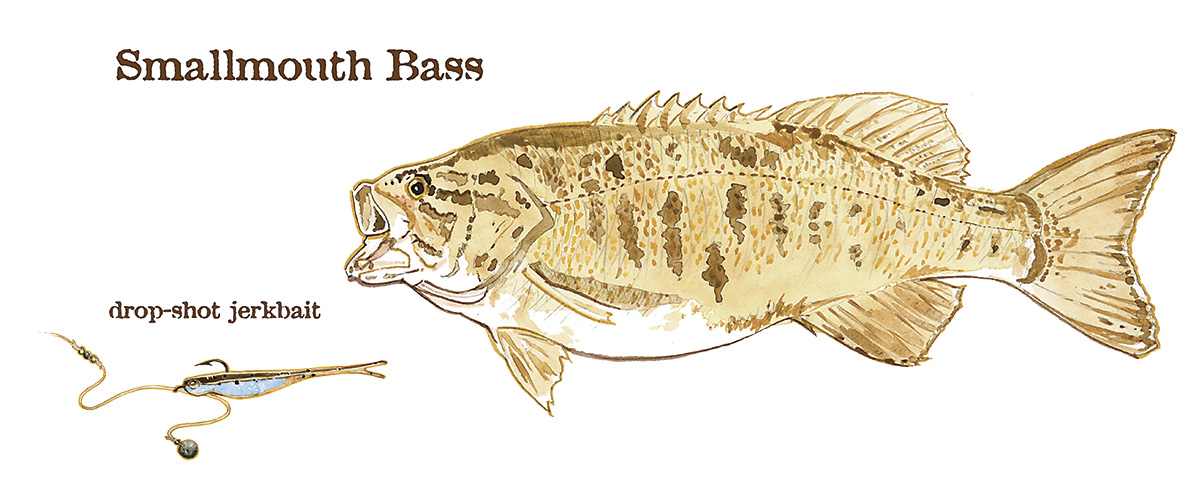
THE BITE: For smallmouths, Soulliere drifts 3- to 4-inch minnows through the channels using a pencil sinker and three-foot leader. He also notes that a wide variety of jerkbaits and other plastics work very well on smallmouths. Walleyes bite on 3/4-ounce jigs with a live minnow.

Devils Lake is the largest natural lake in North Dakota and is on the radar of most duck and goose hunters as a top-tier destination. The landscape here is dotted with potholes of various sizes, agricultural fields, and, as the weather shifts to fall, clouds of migrating waterfowl. However, many duck and goose hunters overlook the outstanding fishing opportunities on Devils Lake.
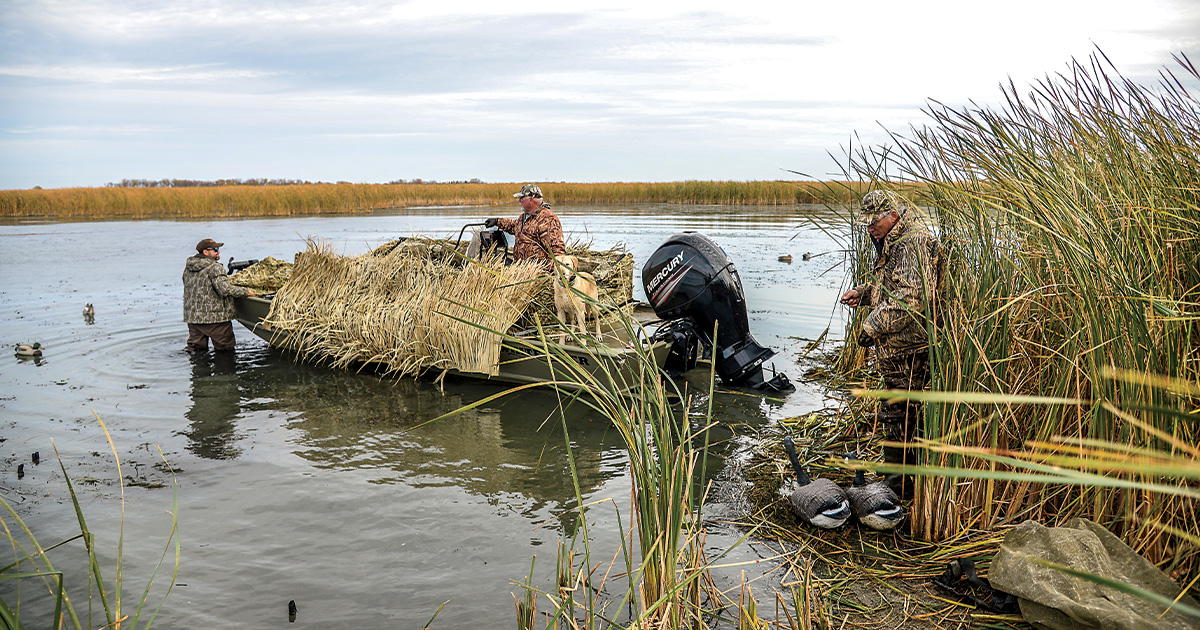
Larry Durand, from Minot, North Dakota, has been fishing the lake for more than 40 years. “The fishery is amazing,” he says. “Most people think about walleyes, but there are huge northerns, perch, and even white bass no one is targeting.”
What makes Devils Lake so productive are the freshwater shrimp that thrive on vegetation and underwater structure. It’s this forage base that separates it from other lakes. And while the lake isn’t known for monster walleyes, it is known for its abundance of perfect eating-sized fish.
Durand says the secret to success at Devils Lake is to have a rod in your hand, in any manner you want to fish, even from the bank. High-end electronics help, and most of the anglers on the lake are using some type of sonar imaging that allows them to get on the walleyes in a hurry.
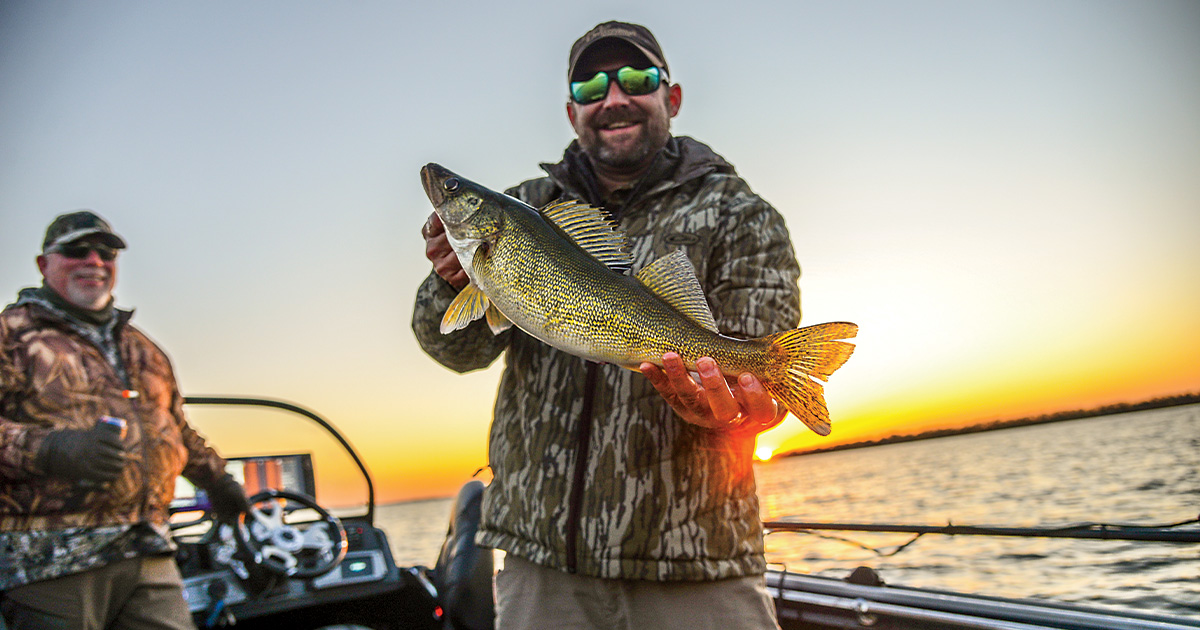
Larry Durand (left) and the author enjoy the rich and diverse fishery at Devils Lake, where waterfowl seasons and prime fishing conveniently overlap.
“Spring fishing is all about water temperatures,” he says. “Fish will go into the shallow flats, maybe even one to two feet of water, or three to four feet, and you can find them by jigging or using bobbers. By mid-summer, it’s bottom bouncers in 14 to 20 feet of water, and in the fall they’ll be in between.”
There’s no reason not to bring a fishing rod on your next Devils Lake adventure, and there are several guide services and local assets available to hunters who may want to spend an afternoon fishing. “If I was traveling here to hunt, I’d reach out to the local chamber of commerce,” Durand says. “They will point you in the direction of places like Woodland Resort and Perch Patrol, who offer the best information available.”
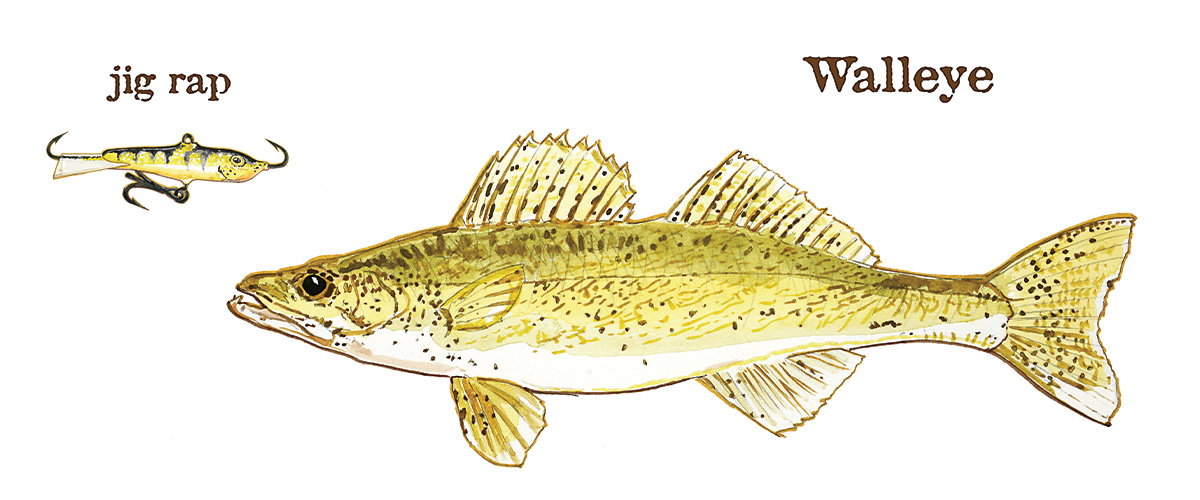
THE BITE: Durand prefers jigs tipped with a live minnow most of the year, but he will rig a bobber when the conditions are right. Fishing with a 2 3/4-inch 5/8-ounce jig rap and changing colors can help you find walleyes when other techniques get slow.

North Mississippi is home to some storied waterfowling, and with a quick jump over the Mississippi River, hunters find themselves in Arkansas rice country. It’s no wonder hunters travel to this region from all over the nation to chase ducks in late fall and winter. However, it’s the trophy crappie that garner attention all year long.
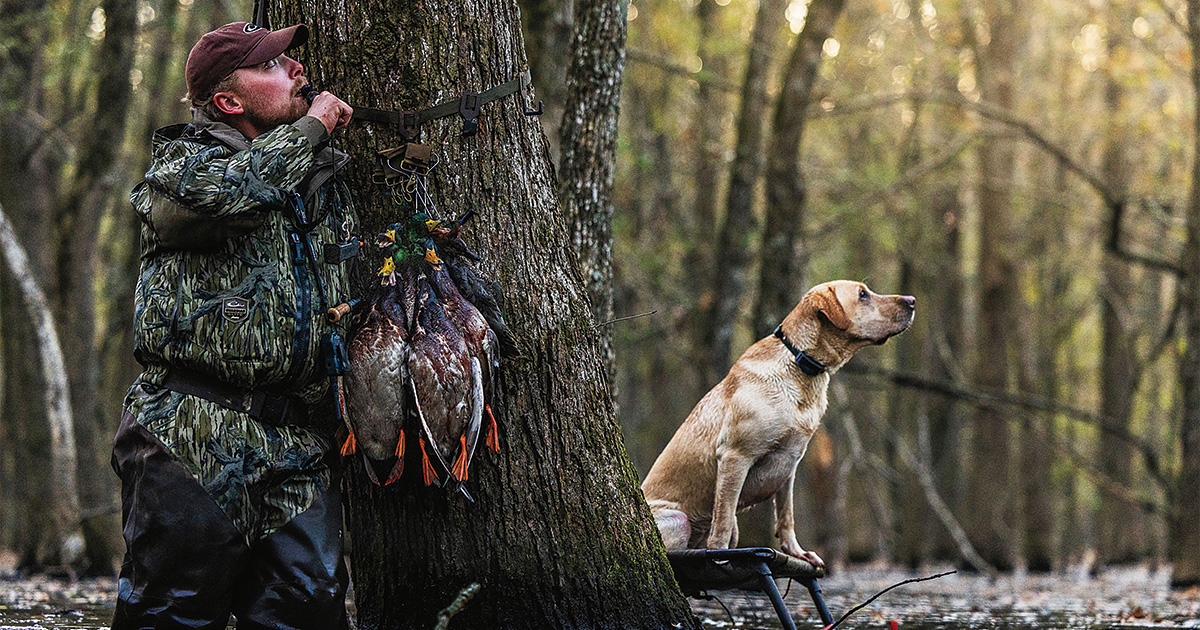
Rich food sources and an active angling community help maintain prolific crappie fisheries in north Mississippi’s reservoirs, which are located in close proximity to legendary duck hunting areas.
Mike Parker lives in Memphis, Tennessee, and has fished Sardis, Arkabutla, Enid, and Grenada Reservoirs for nearly 50 years. He has caught crappie in these waters using just about any method you can imagine, and, as technology has changed, so have his techniques.
“I can catch a limit of fish every day on these lakes. It’s that good,” Parker explains. “It takes some time to learn how to use your electronics and really dial it in, but once you learn how to LiveScope, it becomes more like hunting, because these fish can be anywhere.”

These reservoirs kick out big fish, and lots of them. The International Game Fish Association world-record white crappie, which was caught at Enid Reservoir, weighed five pounds, three ounces. “The food source here is unbelievable,” he says. “There’s a great shad population. Talking with biologists, they have mentioned that the reason these lakes grow such good crappies is because they are fished a lot. There’s so many people fishing that they are taking out enough fish to allow the others to get big.”
Parker prefers to fish in the winter. There’s less boat traffic then, and he feels the fish are easier to find. This is ideal timing for hunters looking to enjoy a cast-and-blast opportunity. “If you’re coming into town to duck hunt and want to hit any of these lakes, you can troll or spider rig,” he says. “Trolling can be a little faster at about two miles per hour with a crankbait, or from the front with a jig at about .4 miles per hour. This will get your bait down. Fish are typically anywhere from 8 to 15 feet deep. A simple jig and minnow or a crankbait will catch fish most days. I’d vary the color a little as you go.”
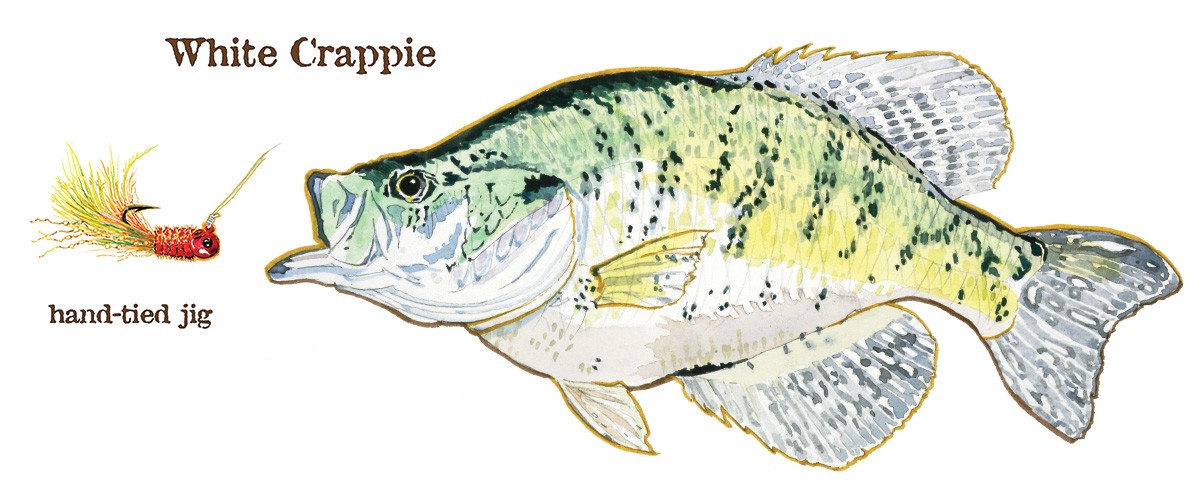
THE BITE: Parker ties his own jigs these days, but he recommends anything between a 1/8- and 1/16-ounce jig and minnow or plastics. The color will depend on the time of year and water clarity. He also recommends small crankbaits for trolling.
Ducks Unlimited uses cookies to enhance your browsing experience, optimize site functionality, analyze traffic, and deliver personalized advertising through third parties. By continuing to use this site, you agree to our use of cookies. View Privacy Policy